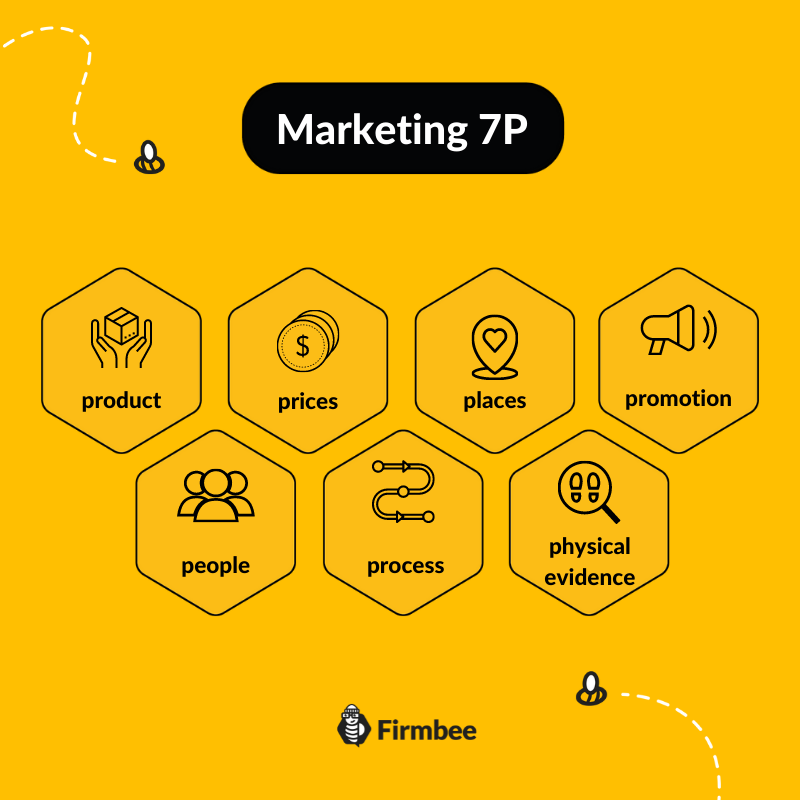Public relations vs marketing – these terms, although rightly associated with the sphere of business management, are often misunderstood and used in the wrong contexts. Unconscious use of these terms may lead to a situation where it becomes difficult to exchange information effectively, which, as we know, is the basis of the activity of any enterprise. So what is marketing and what is PR? What are their components? What is the difference between these concepts? Public relations and marketing – how do they differ? Curious to find out? Read on.
Public relations vs marketing – table of contents:
- Marketing is advertising, right?
- 7P and 8P models, and the place of PR in marketing
- What are public relations?
- FAQ. Questions and answers
Marketing is advertising, right?
Well, no. Marketing is a very complex issue, which consists of many areas of activity. However, before we move on to the characteristics of each of them, let’s define the very concept. According to Kotler and Keller, marketing can be reduced to a process aimed at satisfying needs, while at the same time obtaining profits from it (“Marketing”, p. 5). This is a very abbreviated, but to the point, formulation of marketing. This is because it constitutes its essence – delivering value to others in their interest.
Doing it requires the implementation of many actions on various levels of enterprise functioning. The most popular, basic model, showing these spheres of activity is the so-called “4P model”, by McCarthy, who presented marketing as the sum of four components:
- product,
- prices,
- places,
- promotion.
According to this model, marketing boils down to producing a given product (goods or services), making it available in a specific location (a specific market, stationery store, Internet, online auction, etc.), at a specific price (in the implementation of the strategy of “skimming the cream”, positioning the product in the eyes of consumers as the premium, according to the strategy of penetration, so low prices, with the help of which it will be possible to master the market or according to the strategy of average prices, in which the remaining elements concerning the price are those with which the brand competes with the rest)
Marketing also includes promotion (so taking action to provide information about the product to potential customers and encourage them to buy).
7P and 8P models, and the place of PR in marketing
As you can see, marketing is not just a synonym for the word “promotion”, but a much broader paradigm. Take, 7P and 8P models, and the place of PR in marketing. The aforementioned 4P model was later developed, which resulted in two improved versions of it, much more adequate to the current market realities. The first of them – the 7P model, by Booms and Bitner, assumed that marketing is not only the product, price, place, and promotion, but also:
- people,
- process,
- physical evidence.

In the end, the 8P model was created to complement its previous versions with a partnership element. It is within the framework of “human” and “partnership” elements that we can find the presence of public relations in the marketing strategy of the company. Moreover, these elements do differ.
Marketing and its components form a vague concept. The human part, however, includes more tangible issues such as shaping the image of the brand and its products to anchor them in the minds of consumers. At the same time, it is intertwined with the already mentioned partnership which transfers marketing, and PR with it, into the contemporary reality.
A world in which it is not one-way communication or concluding single transactions that determine the success of a company, but building relations with the environment that provide the brand with a group of loyal and returning clients, contractors and employees.
What are public relations?
Public relations should be understood as a consciously shaped and controlled flow of information about the company. Carried out in such a way that allows for deliberate shaping of its image, both in the minds of the brand’s customers and its business partners and employees. And that in turn, makes it possible not only to manage information appropriately but also to establish the already mentioned relationships, crucial from the point of view of modern business.
When we talk about the differences between marketing and PR, the most important are the main objectives which these areas of activity set for themselves. While marketing is to deliver value while achieving benefits for its own sake, PR aims at building and strengthening the image, creating bonds and trust, conducting a dialogue with the internal and external environment, and engaging others in this dialogue.
Nowadays it is difficult to imagine effective marketing without PR. This is because the direct objectives of the latter indirectly contribute to effective marketing.
Do you like our content? Join the busy bees community! Twitter | Facebook
Author: Zofia Lipska
With over 10 years of experience in digital marketing, Sophia not only knows the rules of this industry but above all knows how to break them in order to achieve outstanding and creative results.
The most important questions
-
What is marketing?
Marketing is, in simple terms, providing value while making a profit from doing so.
-
What is PR?
PR is an area of a company’s activity which boils down to building its image and creating bonds with clients, contractors, and employees.
-
What is the difference between marketing and PR?
It can be argued that PR is a component of marketing, contributing to its objectives. While marketing focuses on creating value and gaining benefits from it, PR focuses on maintaining a dialogue with the environment.


















